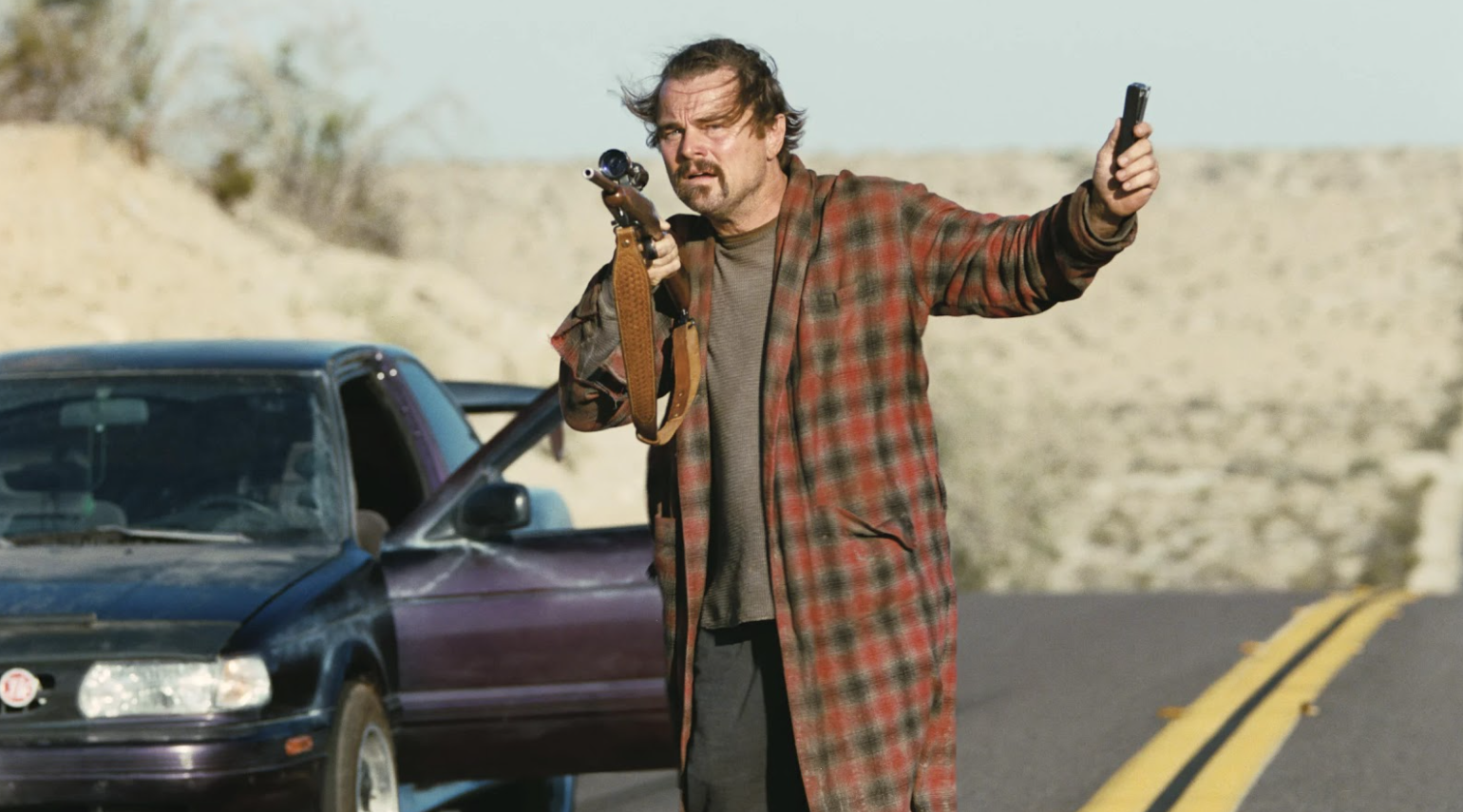If the movies of the 2010s were defined by major blockbuster IP-driven escapism, halfway through the 2020s, it seems as though this decade is defined by hyper-modern films about the real world. From “Everything Everywhere All at Once” to “Barbie” to even “Superman,” all films are exploring the current age to some extent. Whether it’s the inclusion of texting, tweeting, etc. filmmakers cannot avoid the present any longer. In this way, “One Battle After Another” is no different.
The film stars Leonardo DiCaprio, Teyana Taylor, Sean Penn, Regina Hall and newcomer Chase Infiniti. Dicaprio, Taylor and Hall are all members of a revolutionary group called “The French 75.” Sixteen years after members of the group go into hiding, their past comes back to haunt them, as Dicaprio’s Bob Ferguson gets separated from his daughter Willa Ferguson, played by Chase Infiniti, and goes on a search to find her.
Ebbing and flowing through different genres, the movie goes from a 1970s style political film to a stoner comedy in the vein of “The Big Lebowski,” to an action adventure film. It spans throughout California as car chases, protests and bank explosions ensue. At times it gets incredibly dark and honest, but at other times it’s a laugh-out-loud comedy. Ferguson vapes and hotboxes his car, much like “The Dude.” Anderson has balanced this in all of his films but the amount of comedy in this new film is much more central to its DNA.
Marketing for the film has emphasized the different ways one can see it, with stamp cards being given out at theaters titled “one format after another.” Playing in six unique formats, a viewer can get a stamp for every time they watch the movie in a different format. This film’s release invokes the work of Christopher Nolan and Denis Villeneuve with its release in Imax 70mm, suggesting a scope along the lines of “Dune: Part Two” or “Oppenheimer.”
One of the unique formats the film is being released in that’s different from Anderson’s contemporaries is “Vistavision.” It is the first movie in six decades to be released in this respective format made popular in the 1960s by Alfred Hitchcock in movies like “Vertigo” and “North by Northwest.”
Director Paul Thomas Anderson is not new to shooting on film, with every movie he’s shot being done in the medium, but the release of this movie on the biggest film formats sets this movie apart from his previous work. With his second film “Boogie Nights” exploding him on to the 90s mainstream, every subsequent film has impressed.
But a constant criticism that has been levied to his work since the very beginning has been that his movies lack plot. His movies like “Inherent Vice” and “Licorice Pizza” have been criticized, among many other reasons, for this lack of plot. Like directors Stanley Kubrick and John Cassavetes, Anderson is more interested in character than he is in conventional Hollywood narrative. But this movie is not like that.
“One Battle After Another” is a “true blue” Hollywood action film. It follows the same basic structure as most big budget movies. Whereas his earlier work was compared to that of experimental filmmaker Robert Altman, his newest film is in the vein of James Cameron’s “Terminator 2.” There are good guys and bad guys, intensive car chases and emotional setups and payoffs. Using these conventions, Anderson has managed to secure a massive budget and utilize some of the biggest names in Hollywood in order to cleverly sneak comments on immigration and the abuse of governmental power.
Based roughly on author Thomas Pynchon’s “Vineland,” Anderson takes inspiration from Pynchon’s political commentaries and underground organizations to comment on the presence of white supremacist groups in America. In the vein of Kubrick’s “Dr. Strangelove,” the depiction of “the Christmas adventurers club” is at times satirical but ultimately blunt. Members of this club mentioning racial purification and displaying disgust for interracial relationships communicate clearly their ideology. They never directly interact with the majority of the characters in the film, but their influence on its plot and outcomes speak volumes.
They are introduced when Sean Penn’s Captain Lockjaw is given the opportunity to join them. As a member of “M. K. Ultra,” in his green camo uniforms, the actions his character takes suggest an abuse of power by those of similar uniforms in the real world. His own personal interests lead to the MKU falsely accusing minority-led institutions of corruption. Invading and destroying buildings in the name of investigating suspicious activity, all done to distract from his own personal mission he is investigating at the same time.
Though done with different names than its real world counterparts, for a film with a budget of over 100 million dollars, to suggest these ideas about organizations like ICE and the US government is massive considering the way that the movies of the Marvel Cinematic Universe has worked with the American army and air force to uphold the status-quo.
Verdict: All of this to say, “One Battle After Another” is an incredibly fun ride from beginning to end. Its politics and commentary color its world but it can still be enjoyed and as a fun action movie. With needledrops like Sheck Wes’s “Mo Bamba” and Jackson 5’s “Ready or Not,” it’s got something to enjoy for the whole family.








